Don’t like the Windows 10 Microsoft Edge browser? You’re not alone. Only 20% of all Windows 10 users ran Edge as their main browser as of August 2017, down from 24% a year earlier, reports Computerworld’s Gregg Keizer.
Still, that’s a lot of people running the browser, and many of them might run it only because Microsoft has made it the Windows 10 default. You might be one of them. There’s no doubt Edge has been an improvement over Internet Explorer. But it may not be improvement enough.
In this article, I’ll outline the reasons you may want to switch from Edge to Chrome, Firefox, Opera or another browser, and then show how you can replace Edge with any browser of your choice as your default.
One last note before we dive in: Even if you’ve previously set up another browser to be your default, it might have been changed since then. When there’s a major Windows 10 upgrade, the upgrade recommends switching to Edge, and you might have inadvertently made the switch.
Whatever the reason, though, if Edge is your Windows 10 browser, it’s easy to switch.
Why edge away from Edge?
There are plenty of reasons to move to a different browser. Start off with extensions — or more precisely, the lack of them. Edge was finally given extension support in August 2016, but even now the number of extensions is embarrassingly low — only about 65 as I write this. (Head to Microsoft’s Extensions for Microsoft Edge page to see the current list.) Chrome and Firefox each have thousands of extensions and add-ons. So if you want to improve your browser with add-ons and extensions, Edge isn’t the way to go.If you’re a fan of Gmail, Edge
isn’t the browser for you, either. Edge won’t display Google Inbox, which is a far more efficient way to manage mail than the default Gmail interface.
Finally, you might not want to use Edge for aesthetic reasons. Not everyone is a fan of its stripped-down look or the way it handles bookmarks and your history list — they’re difficult to find, hidden under hard-to-decipher icons in out-of-the-way places. And even when you get to them, it’s not at all clear how to perform common tasks, such as adding folders or reorganizing Favorites.
How to designate another browser as your default
If you decide you want to switch to another browser as your default, it’s easy to do. You’ll need to first install the other browser on your system. After that’s done, click the Windows 10 Start button and click the Settings icon that appears on the left-hand side of the screen. (It looks like a little gear.) You can also type “settings” into the search box and click the Settings result that appears at the top of the screen.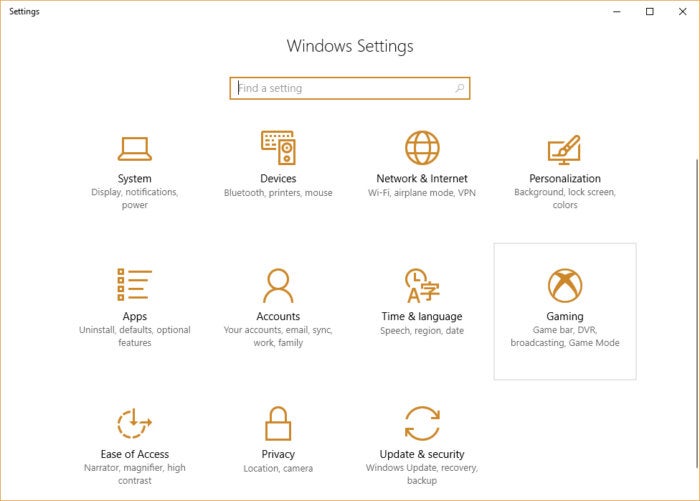 Microsoft
MicrosoftOn the Default apps screen, you’ll see the default apps for email, maps, playing music, viewing photos and videos, and more. To change the default browser, you’ll have to scroll down to the bottom of your screen.
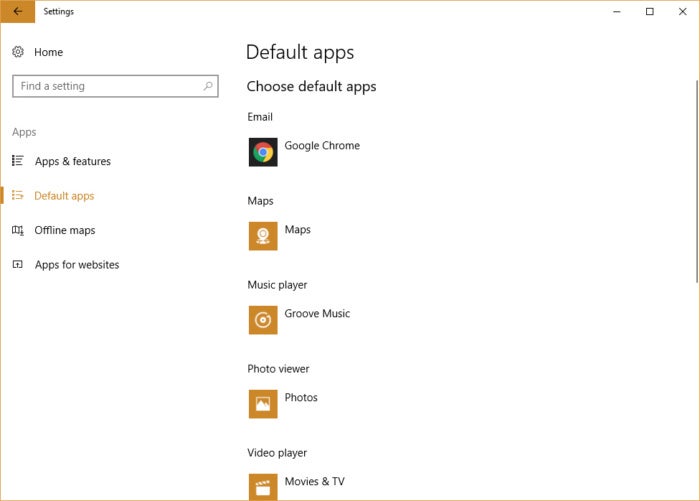 Microsoft
Microsoft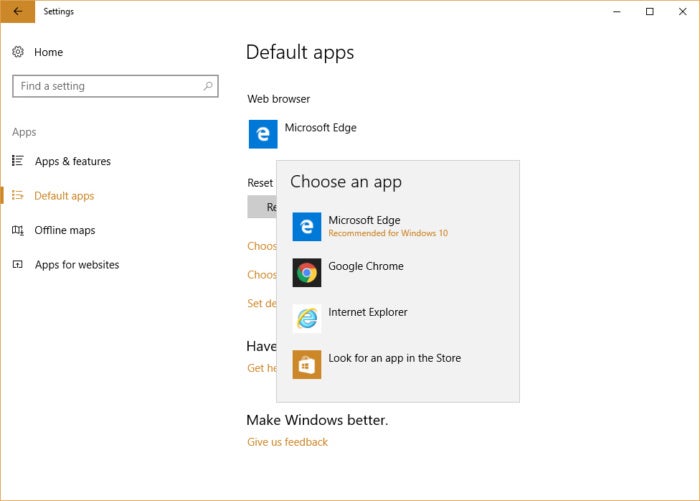 Microsoft
MicrosoftClick the browser that you’d like to be your default browser. As you’ll see when you click it, Microsoft doesn’t particularly want you to switch. A screen appears asking you to stay with Edge.
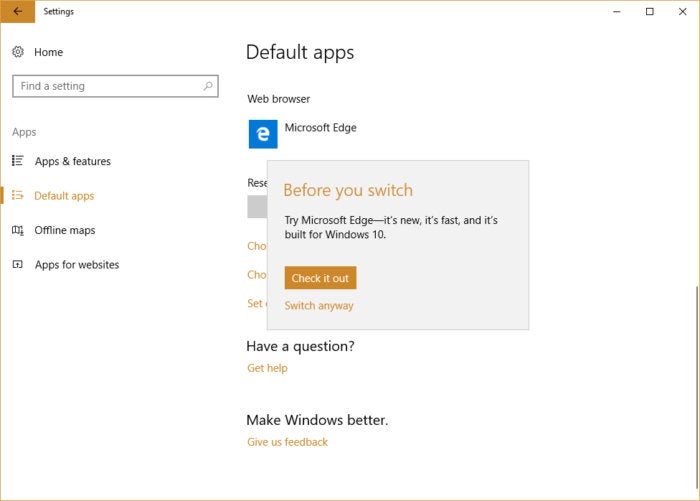 Microsoft
Microsoft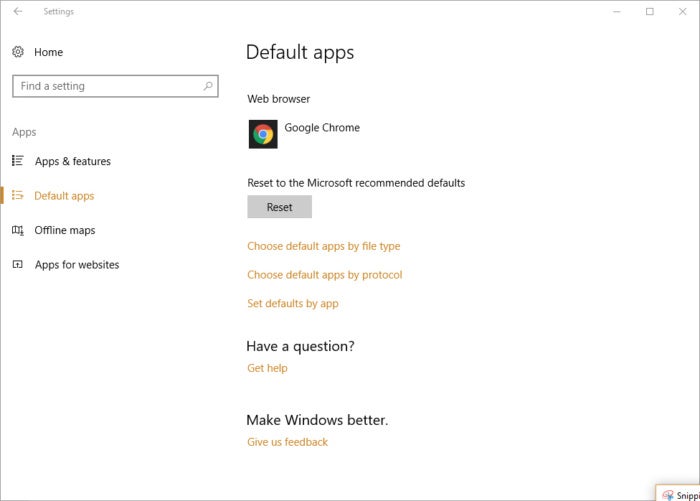 Microsoft
Microsoft

















